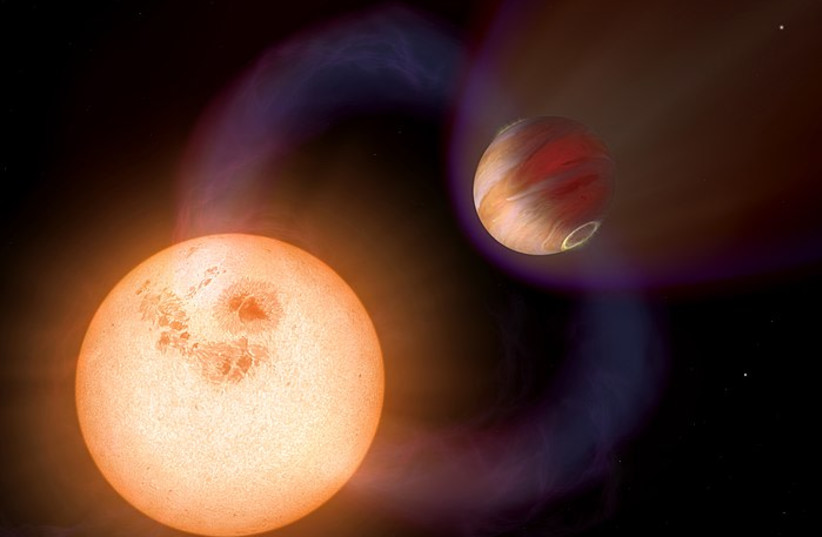Some faraway exoplanets have the potential to be home to alien life, specifically in a part of the planet called the "terminator zone," according to a new study.
The study examines the possibility of life existing on some of the most prominent exoplanets with the chances of being habitable, changing what we know about possible homes of extraterrestrial life.
The findings of this study are published in the peer-reviewed academic periodical The Astrophysical Journal.
Are aliens out there? The search to find life on other worlds
When it comes to trying to find life on other planets in the universe, the main targets are exoplanets (which means planets outside the solar system) that have similar parameters to the one planet we know for sure can support life: Earth.
This means being a rocky world - as opposed to a gas giant - located at an appropriate distance away from the Sun - not too far but not too close - with water, carbon and an atmosphere.

We also try to look at worlds that orbit G-type stars, like the Sun.
However, most stars are not G-type stars. Rather, the majority of stars in the Milky Way Galaxy are thought to be red dwarf stars (M dwarfs).
These stars are smaller and aren't as bright, which changes things, such as having the habitable zone being much closer to the star than the Earth is to the Sun.
The fact that the planets are so close to their star, however, poses an interesting problem: Tidal locking.
A trip to the twilight zone: Life on a tidally locked world?
This term refers to the fact that the time it takes for a planet to fully spin on its axis - what we would call a day passing on Earth - is roughly equal to how long it takes for it to complete its orbit around its star - what we would call a year passing.
Because of this, it means that the side of a planet facing its star is always facing the star, whereas the side of the planet facing away always faces away.
A good example of this can be seen with the Moon, which is tidally locked to Earth. People on Earth always see the same side of the Moon because it's tidally locked, while the dark side of the Moon is always dark.
Likewise, if the Earth was tidally locked, one side would always be daytime while the other side would always be nighttime.
But this has far more implications than just simple day-night cycles.
By one side always facing the star, it is bombarded with the star's radiation, while the night side is completely devoid of it. This means the side not facing the star could face atmospheric collapse without the star's energy to support it. Meanwhile, the spot always facing the star would be covered in radiation and greenhouse gases, which causes its own issues.
In particular, there is the issue of liquid water, which is essential for life. On the night side, temperatures are too cold for liquid water to not be frozen solid, while on the day side, temperatures are too hot for liquid water to not evaporate into water vapor.
All in all, this sounds like a recipe for an inhospitable planet. But that may not be the case.
While both sides are tidally locked and the day sides and night sides are indeed inhospitable, there is technically a spot right in the middle, where both sides meet, that is essentially "just right" for habitation.
This is what is known as the terminator zone - a name that may brings to mind death and destruction rather than the ability to support life - and is also known as the twilight zone, and it spans a planet-wide ring between both sides.
Here, it's possible for water to exist in its liquid form, and therefore for life to exist.
This itself isn't anything new. In fact, this scenario has long been discussed in science fiction works, such as several stories by sci-fi pioneer Isaac Asimov like "The Dying Light" and "The Mule," Larry Niven's Known Space series, the planet Adumbria in the Warhammer: 40,000 setting and the planet Ryloth in the original Star Wars Legends continuity.
But could what is essentially a science fiction premise actually function in real life?
This is something the researchers behind the study tested, utilizing a model based on Earth and adjusting to make it tidally locked.
And according to this study, the theory holds water.
The findings of this study are so significant because it greatly expands the number of planets that could be capable of supporting life. Now, there is more work to be done, such as closely examining these worlds and their atmospheres.
Fortunately, that is something NASA's James Webb Space Telescope may be capable of doing, as will the Large Ultraviolet Optical Infrared Surveyor telescope, which NASA is also developing.
And with that, an element strictly confined to science fiction may just become a reality.
